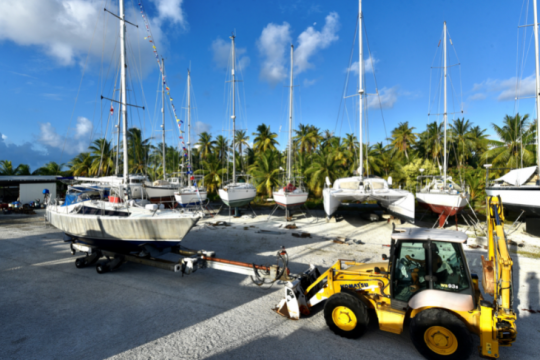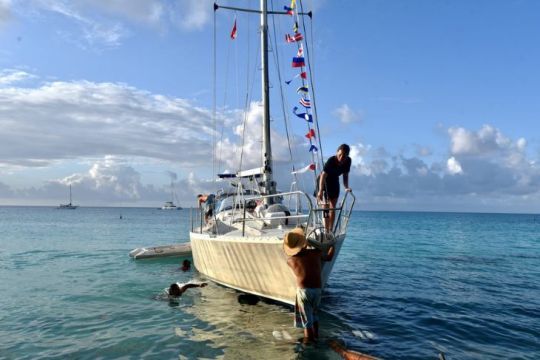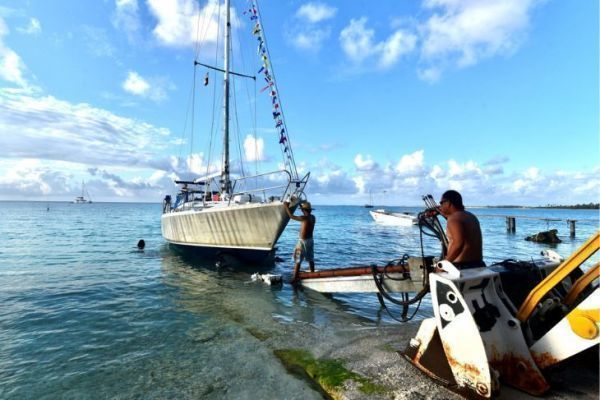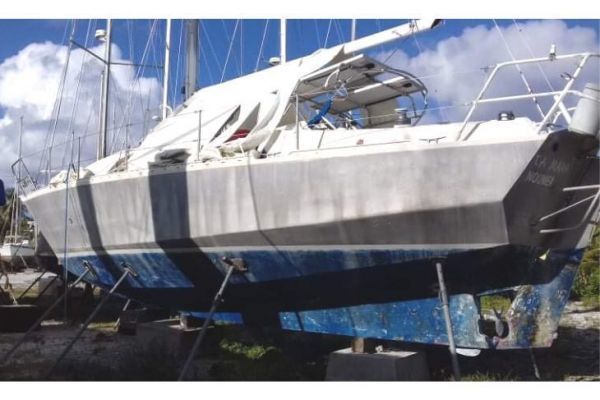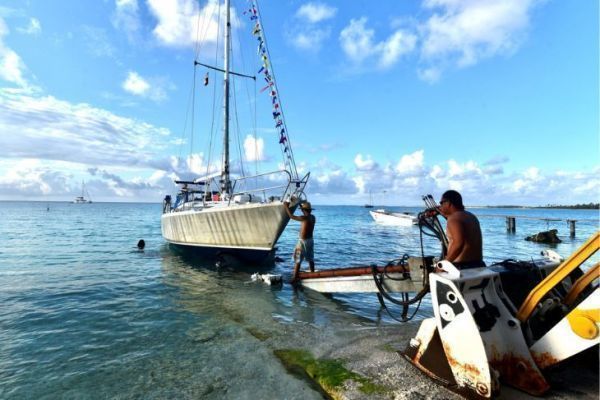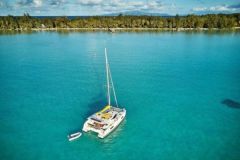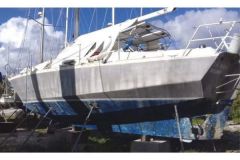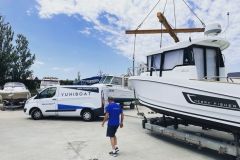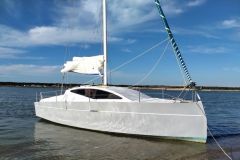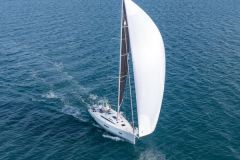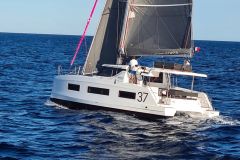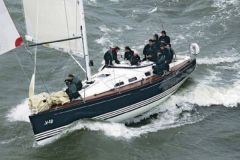Getting ready for the big trip
After three long years in the dry on the careening area of the Apataki shipyard, Charles's yacht needs some work to be put back in service. Once he leaves the atoll, there will be no possibility to put the boat in the dry before Tahiti, 250 nautical miles away. So, before setting sail again, he had to check the important elements and the proper functioning of the boat. During the three weeks that this work will require, he will work and sleep on board, in the yard.
Special working conditions
On the careening area, the atmosphere is friendly. The crews work mostly in the morning and late afternoon, to avoid the overwhelming sun that dominates during the day. The work is done in the presence of nonos, tiny mosquitoes that thrive in the lagoon next door.
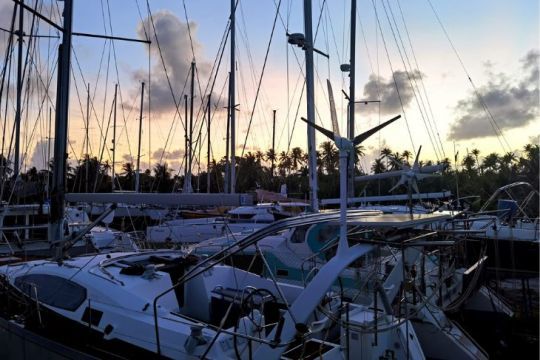
After taking stock of his boat, Charles began to reassemble the various elements. The messengers installed in the mast allow him to easily reattach the halyards, and the different diagrams he took the time to make when he removed the boat make the work easier.
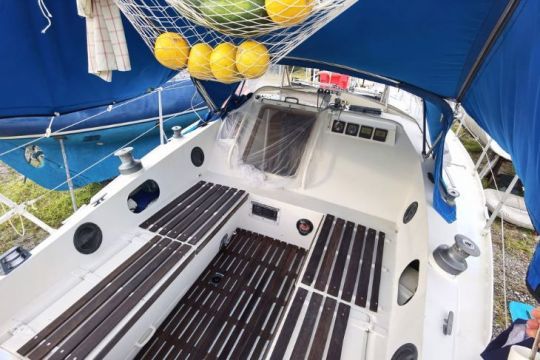
The boat is quickly refitted. Charles replaces some of the lights damaged by UV rays, such as the navigation light at the bow and the anchor light at the top of the mast.
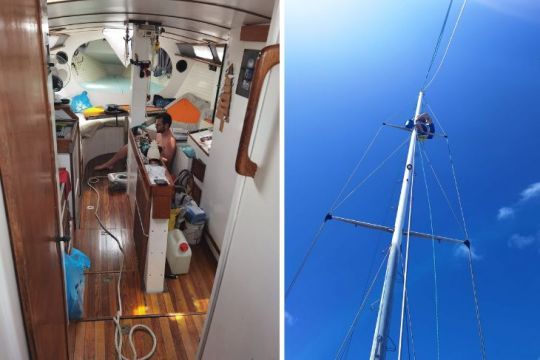
The interior needs a lot of tidying and cleaning. He checks the expiry date of the security armament and controls the food remaining in the trunks: some canned goods are long out of date or have not resisted the storage conditions.
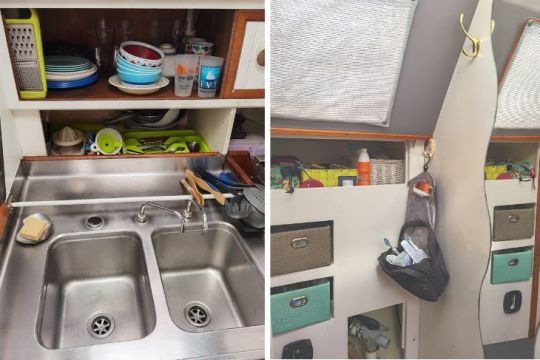
The control of the correct operation of the engine is done with the help of a water hose, placed directly in the sea water intake. This makes it possible to realize that a gooseneck is clogged, which it repairs.
Life on the construction site, far from the rest of the world
Getting the boat back into sailing condition takes several days. The days follow one another and are similar!
The boat's batteries having failed while he was away, Charles had to bring in new equipment. But in Apataki, the supply is relatively complicated. He says: " Fortunately, there is a small faré here from where it is possible to receive the shipyard's WiFi network. Thanks to this, I was able to scour the forums to find the right equipment to order for my boat, and find dealers in Papeete, on the island of Tahiti." .
The material is then made to wait: the goods ordered and paid remotely, it is necessary to find a carrier to withdraw it to the store and to deposit it on the schooner which supplies the island once every one or two weeks.
The shipyard is so far away from the rest of the world that it favors closeness between the crews present: on the small atoll, tools and skills are frequently shared with the neighboring boats. There are many original personalities, from the four corners of the world, all with their own stories. Charles explains " I was also able to meet Olivier de Kersauson, who came to carry out bathymetric surveys in the Apataki lagoon with his trimaran" .

Each evening, the domesticated nurse sharks come to feed and mark the end of the day. The crews then meet on the wooden pier to enjoy an aperitif-sunset, or gather under the small faré for a shared meal. Then each one leaves to sleep on board his boat, while waiting to continue the work the following day.
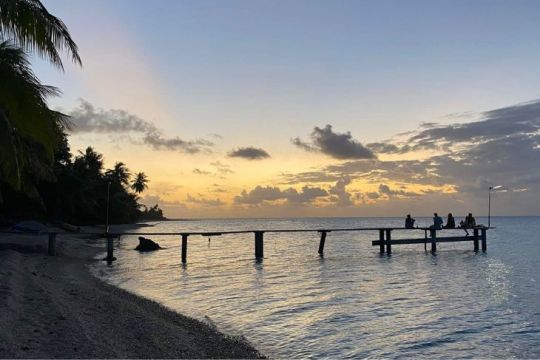
A night in the village to collect material
The day before the arrival of the schooner on the atoll, Charles embarked on a flatbed with the shipyard's team to retrieve the batteries ordered. After an hour of sailing, they reached the village quay, where they watched for the arrival of the ship all evening.
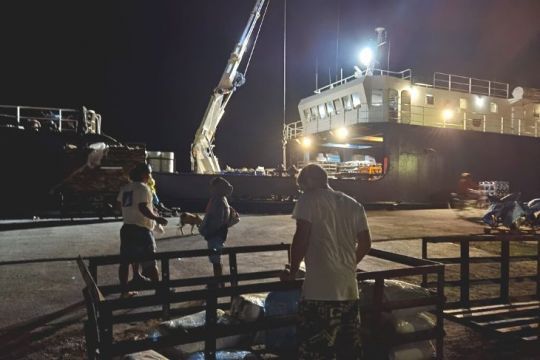
Around two o'clock in the morning, they can finally remove the goods. After a few errands in the village to bring back food supplies for all the travelers, they return to the site the next day.
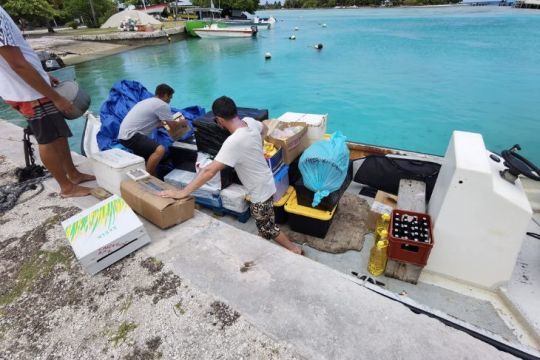
Back on the motu, the owner can finally install his new battery park. He took the opportunity to add a charge controller, which he had brought back from France in his luggage. New solar panels finish equipping the sailboat.
Time to launch
And then, there is a morning that is like no other: the day of the launch! Charles hurried to apply the antifouling on the boat's hull.
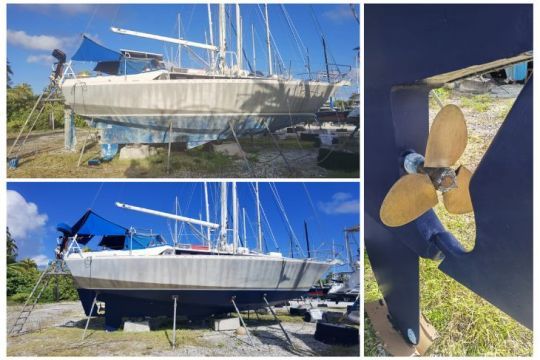
When the painting is finished and the tide is high enough, the shipyard team comes to put the boat on the cart for the launching.
As soon as the boat is floating again, the navigator carries out the final checks. The tightness of the stern tube and the various valves are checked. He is then finally ready to set sail for new horizons.
